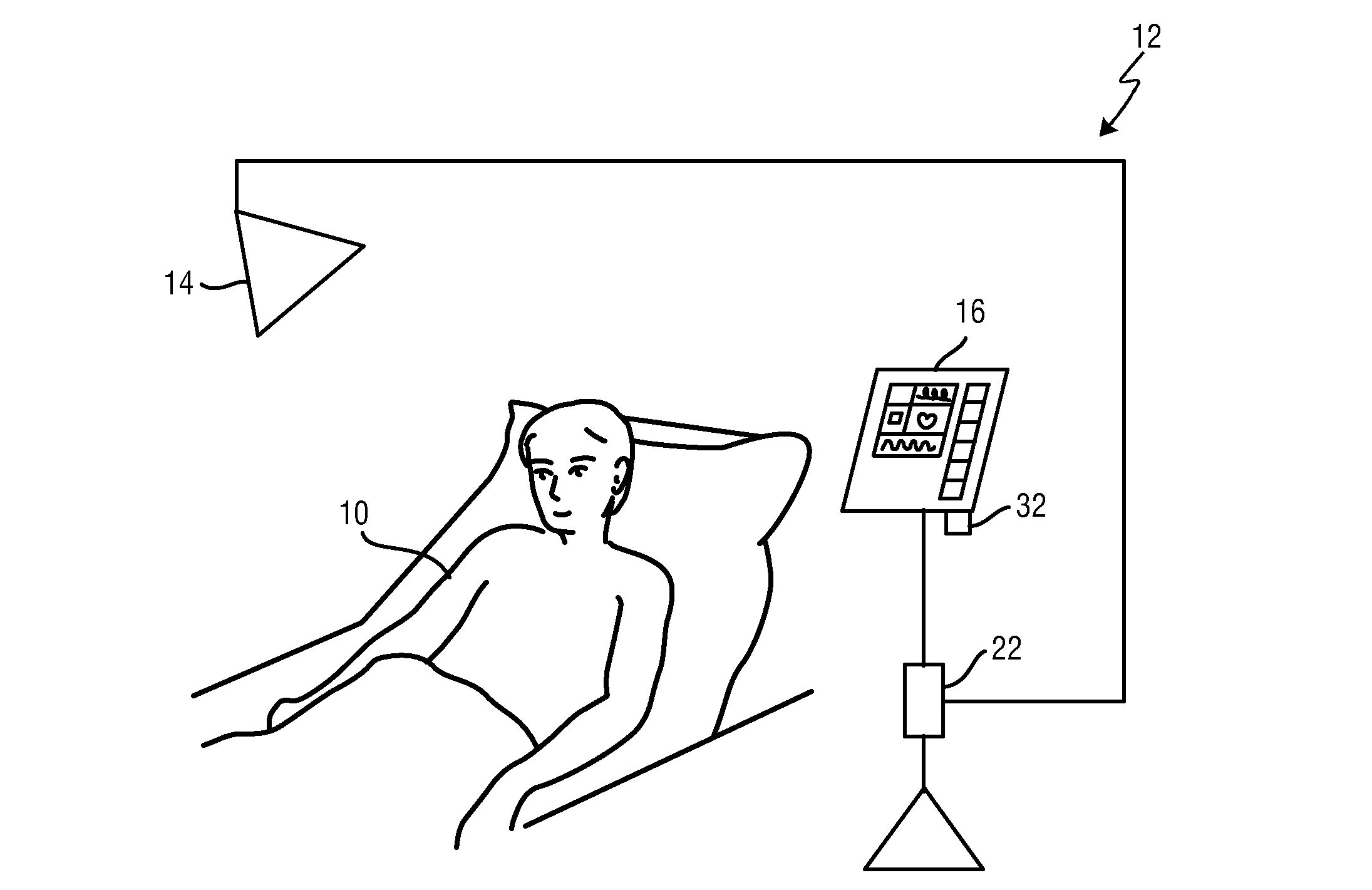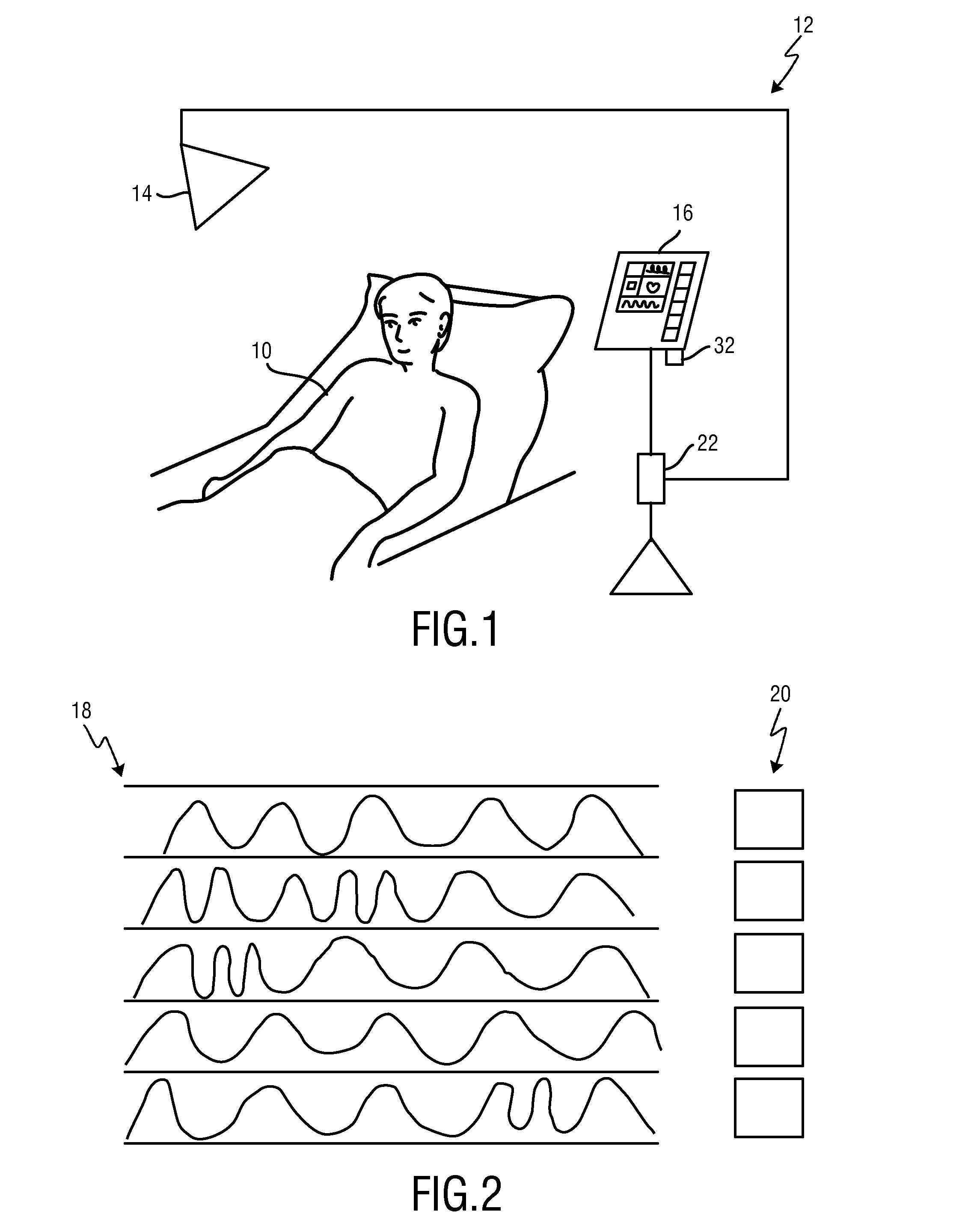Improved signal selection for obtaining a remote photoplethysmographic waveform
a technology of photoplethysmography and signal selection, which is applied in the field of improved signal selection for obtaining a remote photoplethysmographic waveform, can solve the problems of unreliable waveforms, unobtrusive remote photoplethysmographic systems and devices, and unpleasant contact ppg measurement, so as to improve the acquisition of reliable vital signs.
- Summary
- Abstract
- Description
- Claims
- Application Information
AI Technical Summary
Benefits of technology
Problems solved by technology
Method used
Image
Examples
Embodiment Construction
[0047]FIG. 1 illustrates a patient 10 being hospitalized in a hospital bed. In such a hospitalization scenario the vital signs of the patient 10 need to be monitored. Conventional monitoring systems thereby usually rely on attachable sensors, i.e. body mounted sensors. In order to increase patient comfort, remote monitoring systems can be used, which can reduce the required cabling. In FIG. 1 there is illustrated a monitoring system 12 for remotely monitoring a vital sign of a patient 10 according to an aspect of the present invention. The illustrated system 12 thereby makes use of the remote photoplethysmographic measurement principle. Thereby, a camera 14 is used to capture an image, i.e. a video sequence of the patient 10. This camera can comprise a CCD or CMOS sensor for converting incident light and the intensity variations thereof into an electronic signal. The camera 14 particularly non-invasively captures light reflected from a skin portion of the patient 10. A skin portion ...
PUM
 Login to View More
Login to View More Abstract
Description
Claims
Application Information
 Login to View More
Login to View More - R&D
- Intellectual Property
- Life Sciences
- Materials
- Tech Scout
- Unparalleled Data Quality
- Higher Quality Content
- 60% Fewer Hallucinations
Browse by: Latest US Patents, China's latest patents, Technical Efficacy Thesaurus, Application Domain, Technology Topic, Popular Technical Reports.
© 2025 PatSnap. All rights reserved.Legal|Privacy policy|Modern Slavery Act Transparency Statement|Sitemap|About US| Contact US: help@patsnap.com



